
Powdery mildew starts out as small whitish spots or splotches. As it grows and reproduces, the fuzzy patches increase in size and coalesce to completely cover leaves, stems, and buds. It will look as if the plant has been dusted with flour.
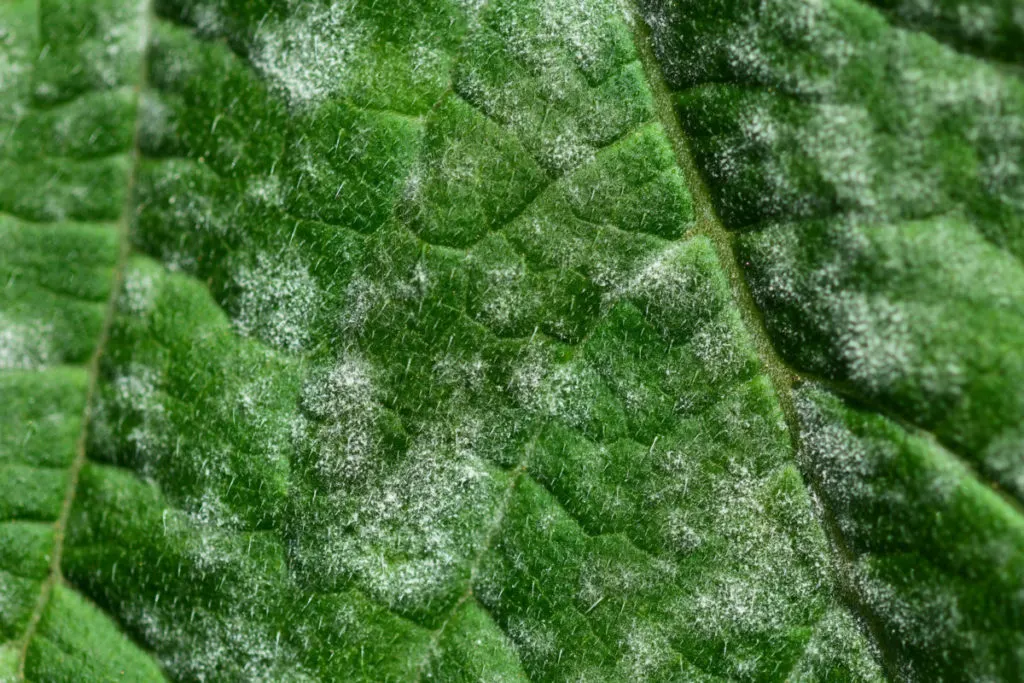
Alongside rusts, powdery mildew is the most common fungal disease to attack plants in temperate zones across the globe.
More than 10,000 plant species are potential hosts for powdery mildew. The long list of cultivars includes ornamentals like honeysuckle, rose, phlox, zinnia, delphinium, rhododendron, azalea and lilac.
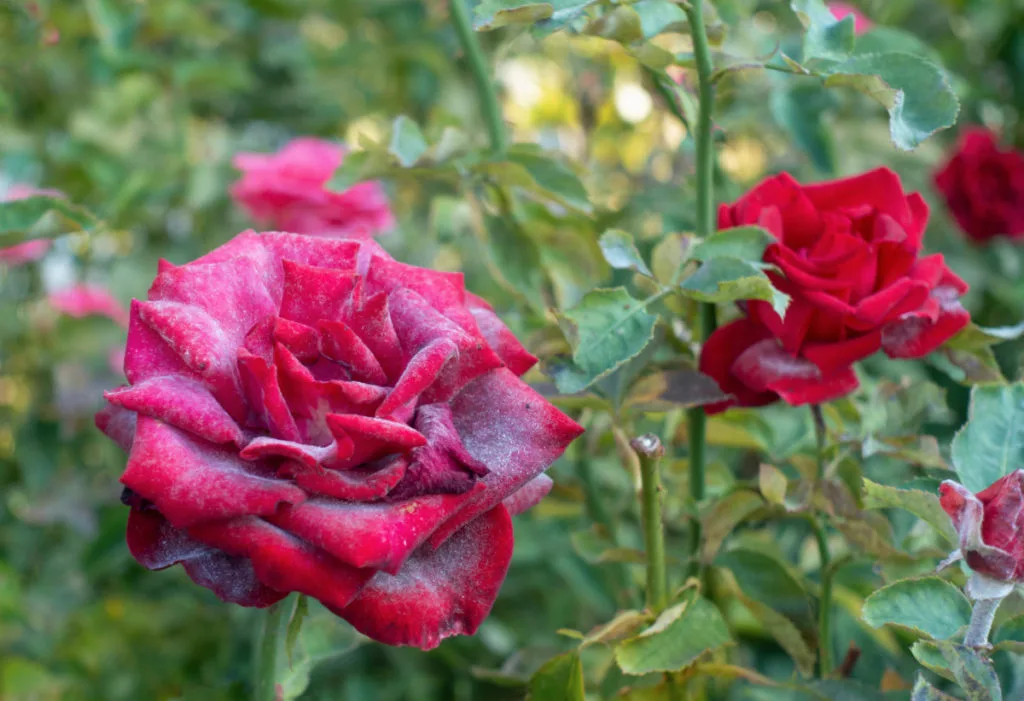
Food crops, like cereal grains, legumes, onions, strawberries, apples, pears and grapes, can also become afflicted.
Powdery mildew has a particular fondness for every member of the cucurbit family too. Pumpkin, summer and winter squashes, zucchini, cucumber, cantaloupe, and watermelon are among its favorite plants to colonize.
While powdery mildew will rarely kill cucurbits crops outright, it will stunt plant growth and cause fruits to be smaller, with fewer to pick at harvest time.
The fruits that do come to bear will be malformed, discolored, speckled, bumpy or bruised. Though still edible, they will be far less flavorful and have a much shorter storage life.
What is Powdery Mildew?
Powdery mildew is a fungal disease caused by hundreds of different species within the Erysiphaceae family.
Some species are generalists that attack a wide array of plants and others are specialized for infecting specific plant families.
When you see this white dusting on squash, gourds, and melons, the most likely culprits are the cucurbit-specific fungi Podosphaera xanthii or Erysiphe cichoracearum.
Powdery mildews are obligate parasites that are wholly dependent on the host plant for survival. Spreading over the surface of the plant, the white mycelium penetrates plant tissues to soak up its nutrients.
As the infection progresses, it reproduces via asexual spores. These look like little chains that rise up in vertical columns, perpendicular to the leaf surface. All it takes is a strong gust of wind for the standing spores to break free and infect a whole new plant.
Powdery mildew hops just as easily to neighboring crops as it does traveling far distances hundreds of miles away. It is thought that powdery mildew inoculates plants in southern states early in the year and moves northward as the weather warms.
It is able to overwinter in cold climates by producing special resting structures known as chasmothecia.
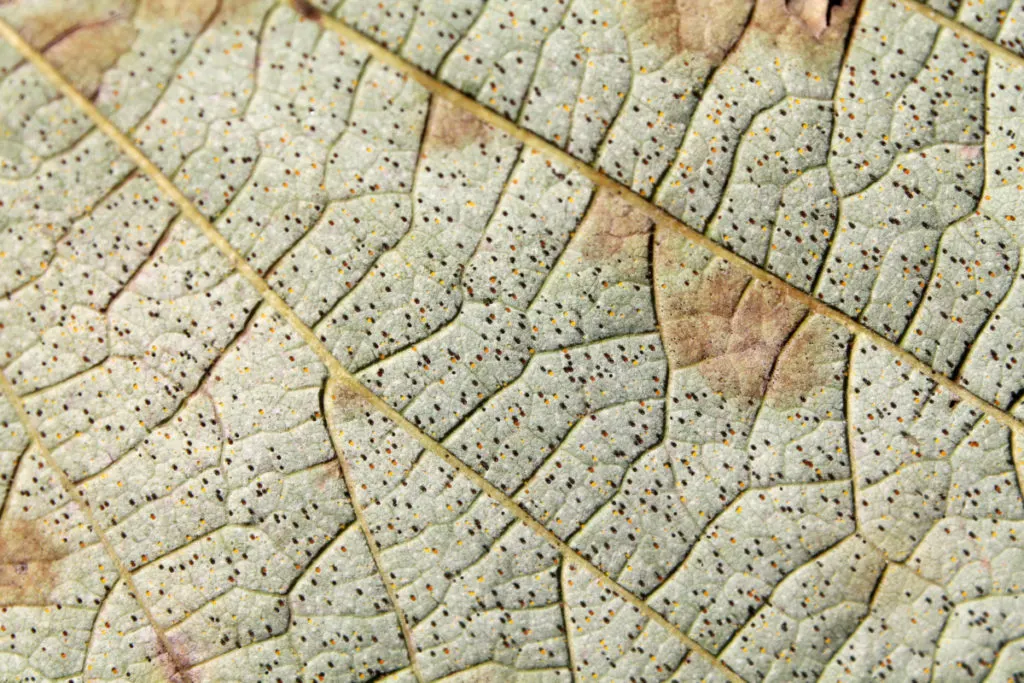
These appear as tiny black specks on leaves in autumn. Hard and round, they act as a protective shield for the enclosed fungal spores. As temperatures rise in spring, the shell pops open and the fruiting bodies are released.
Identifying Powdery Mildew
Compared with other plant diseases, the symptoms of powdery mildew are quite distinctive and very easy to recognize.
First appearing in midsummer after plants have set fruit, the earliest sign of powdery mildew on zucchini, pumpkins, and other cucurbits is a pale yellow spotting on the leaves.
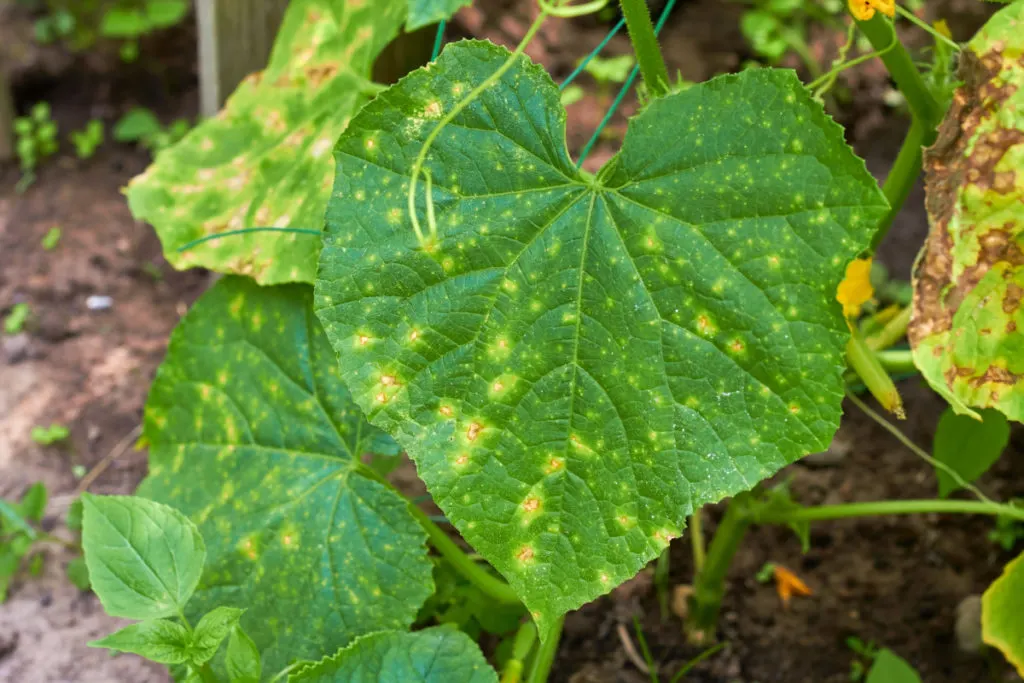
It typically crops up on older leafy growth that is shaded by newer leaves. Leaves that are most susceptible to infection are those that have unfurled 16 to 23 days prior.
Powdery mildew attacks both the upper and lower leaf surface, as well as vines, stems, and leafstalks. Very rarely, it will spread across the fruit too.
The disease prefers moderate temperatures between 68°F and 80°F (20°C and 27°C) with medium to high humidity in the 50% to 90% range.
In these warm and humid conditions, powdery mildew reproduces quickly.
It takes just 3 to 7 days from infection to the appearance of symptoms. In this short time frame, each square inch of leaf surface can hold over 2 million microscopic spores.
As the small spots grow larger and larger, they will eventually turn white to gray in color. These combine with other nearby spots to form an all-encompassing mat over the foliage.
The white powdery stuff – the mycelium – looks fuzzy or fluffy. These are actually the columnal spores seeking to catch a ride with the wind.
Spreading from plant to plant, powdery mildew can make an entire field of crops turn white in only 7 to 10 days.
As the foliage becomes starved for nutrients, the leaves will dull in color and turn yellow. Leaves begin to wilt, become brown and papery, then shrivel up and die.
Although powdery mildew is a foliar disease that usually doesn’t attack the fruit itself, the premature die-off of leaves can have a major impact on the quality of the harvest.
Healthy leaf growth is absolutely vital for fruit to develop full flavor at maturity. Through the wonders of photosynthesis, plant leaves and other green bits absorb sunlight and convert it into the energy needed to produce sugars. Less leafy growth means less sugar in the fruit, leading to a bland-tasting harvest.
10 Ways to Manage Powdery Mildew
Nipping powdery mildew in the bud as soon as possible offers the best chance of conquering the disease. Once it becomes well established, even the strongest fungicides – organic or chemical – won’t be able to cure plants.
Though powdery mildew can’t be completely prevented, creating unfavorable conditions for this fungus will go a long way toward minimizing the damage.
Good cultural practices should be the first line of defense against powdery mildew and chemical controls the last.
1. Always Plant in Full Sun
Every member of the cucurbit family loves the sun. Plant zucchini, pumpkin, squash, cucumbers, and melons in a spot that receives at least six hours of direct sunlight, if not more.
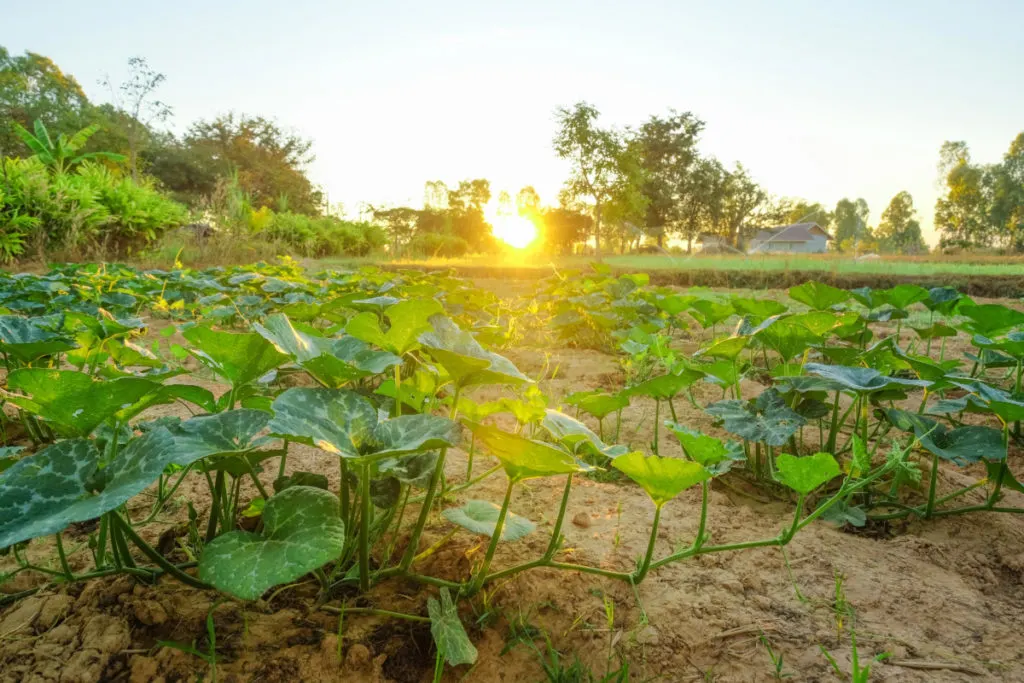
Not only will a sunny location give cucurbits what they need to thrive and produce, but ample sunlight will also help ward off powdery mildew.
Low light levels are one of the things powdery mildew needs to gain a foothold on your crops. As these plants grow and send out their long, reaching vines, arrange them so the foliage doesn’t overlap and shade out other leafy growth.
2. Increase Air Circulation
Powdery mildew flourishes in humid environments. Crowded plants and dense foliage create the perfect conditions for this disease to succeed and prosper.
As a preventative measure, give your cucurbit crops lots of room to grow.
These plants tend to be sprawlers anyway and will give you a wonderful bounty when allowed to creep ever outwards. If you have the land, consider spacing them even farther apart than the recommendations on the seed packet.
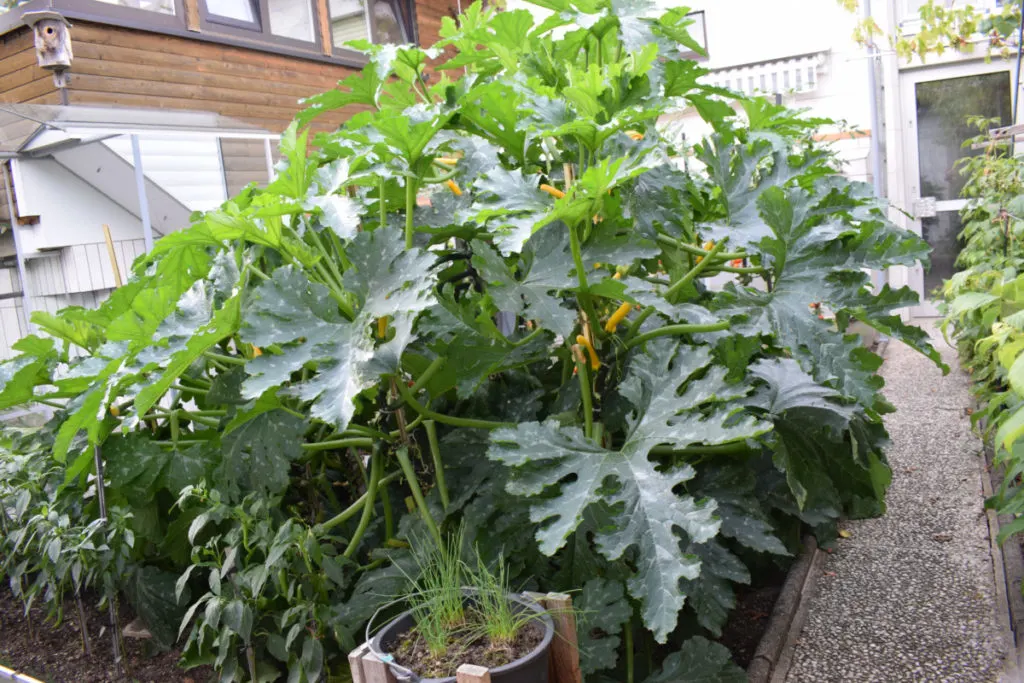
Selectively prune back leaves that are massed together to keep the air moving. Be careful here as you don’t want to cut away too much and lessen the flavor of the harvest. Whenever possible, keep the leaves that are shading the fruit to avoid sunscald.
3. Grow Resistant Varieties
Most modern seeds come with a standard resistance to diseases like powdery mildew. You may not realize how susceptible cucurbits are to this fungus until you grow an heirloom variety.
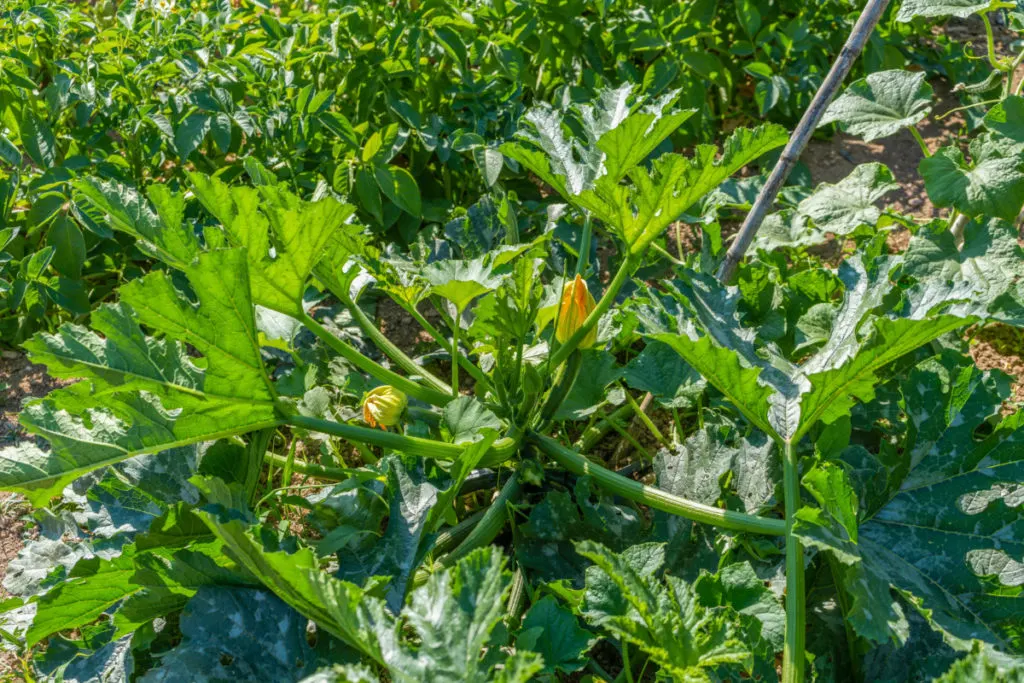
There are hundreds of F1 hybrid seeds on the market today that are excellent at suppressing powdery mildew infections. These specially bred cultivars may be marked as HR (“high resistance”) or IR (“intermediate resistance”) on the seed packet.
Here is a detailed list of cucumber, cantaloupe, honeydew melon, watermelon, pumpkin, yellow summer squash, zucchini, and winter squash varieties with resistance to a slew of diseases, including powdery mildew.
4. Inspect Leaves Once Per Week
Powdery mildew tends to materialize on cucurbit foliage from midsummer and into the fall as temperatures drop to moderate warmth. By this time, the zucchinis and cucumbers will have already started fruiting.
Catching an infection early is really the best way to save the harvest.
Take a few minutes each week to thoroughly examine five mature leaves for infection. In larger fields, select 10 plants at different locations and take a look at five leaves each.

Powdery mildew can be hard to see at first when it’s just beginning to take root. Look for tiny spots on the upper leaf surface. These can be very faint, yellowish discolorations in the normally medium-green leaves.
5. Remove and Destroy Infected Parts
As soon as you spot a powdery mildew infection, remove all affected foliage to prevent it from spreading to healthy plants.
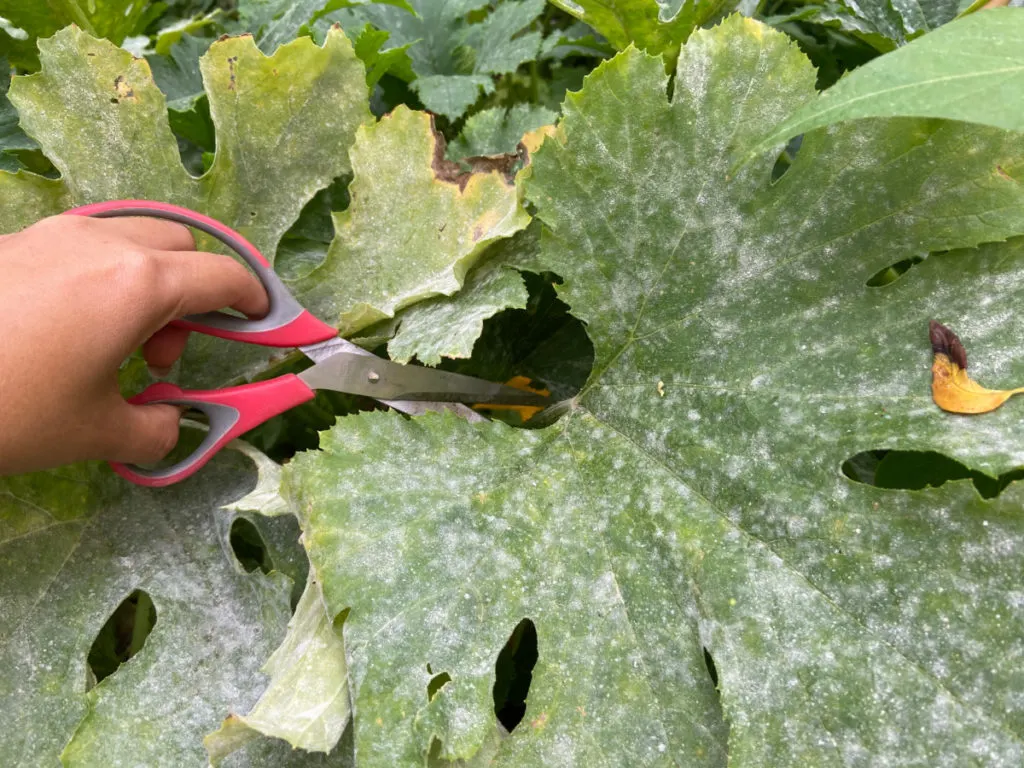
Destroy the infected bits by placing them in the trash or by burning them. Don’t toss them in the compost as the spores can persist in the finished humus.
When you’ve finished this task, clean and sterilize your pruning shears.
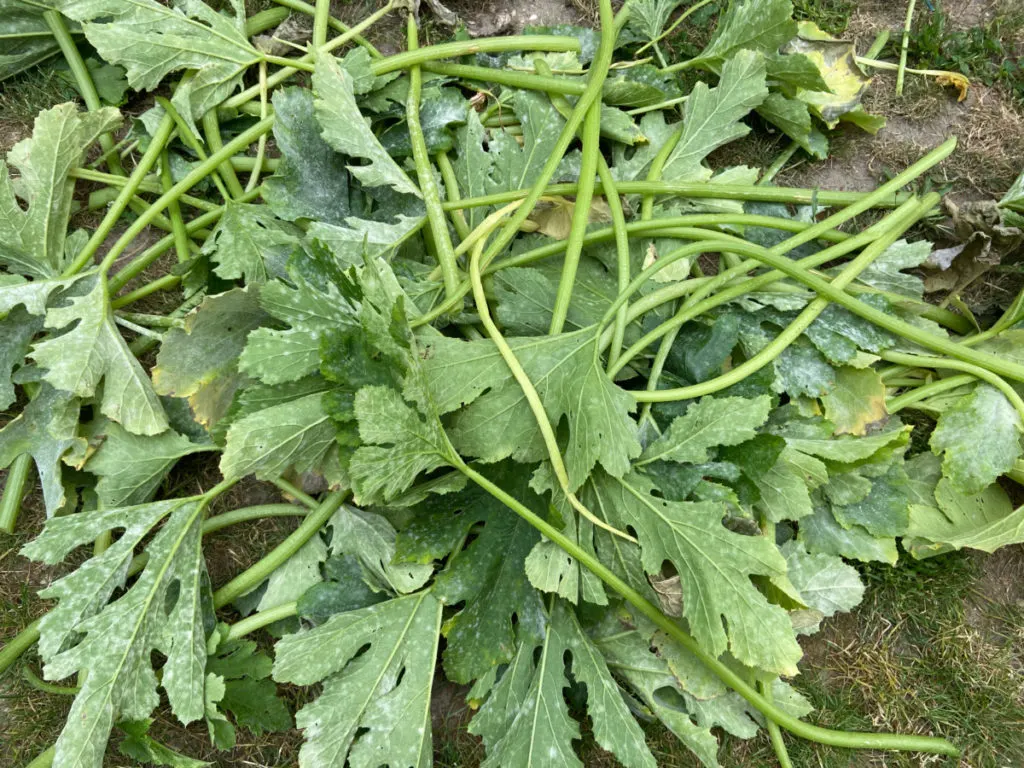
Use rubbing alcohol or white vinegar to kill the spores and prevent the inadvertent spreading of the disease to your other crops.
After all evidence of the blight has been removed, you can use foliar treatments to keep the fungus from coming back for more.
6. Don’t Overfertilize
As you fight the good fight against powdery mildew, limit your use of fertilizers until you get the outbreak under control.
This can be a bit of a balancing act when growing cucurbit crops since they are such heavy feeders.
You’ll want to fertilize just enough to keep plants healthy and vigorous, but not too much as to encourage the disease to spread.
Nitrogen especially should be reduced since it boosts green and leafy growth. New flushes of leaves will provide more surfaces for powdery mildew spores to migrate to and feed upon.
7. Spray Crops with Milk
Spraying your cucurbit crops down with diluted milk offers significant control of powdery mildew, according to a 2011 study from the University of Connecticut. In fact, the milk treatments were just as effective against the disease as chemical fungicides.
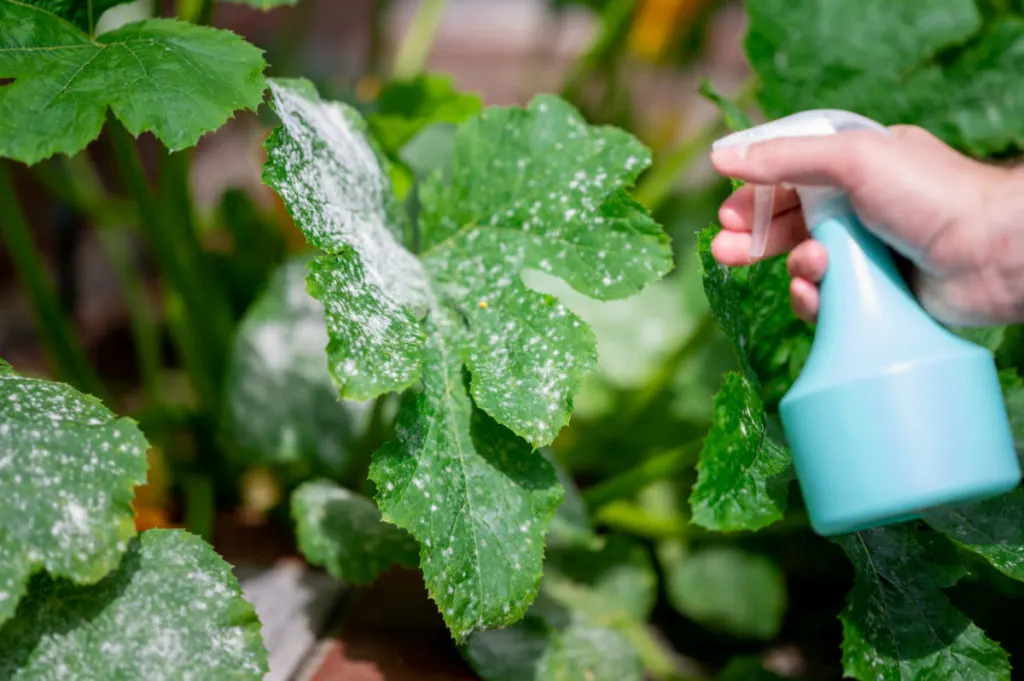
Milk is thought to work against powdery mildew in a number of ways.
Firstly, it creates a physical barrier that prevents the fungus from attaching itself to the leaf surface. Next, milk has a slightly alkaline pH which makes foliage less hospitable to encroaching spores. Milk also contains lactoferrin, a natural antimicrobial agent. And lastly, when milk-sprayed leaves are exposed to sunlight, they produce free radicals that are toxic to powdery mildew.
To make a milk spray, combine 40 parts milk (whole, powdered, or whey) with 60 parts water.
Apply the milk treatment immediately after mixing. Douse plants thoroughly, making sure to soak the underside of leaves. Reapply every 7 to 10 days and after every rainfall.
Milk sprays are best employed as a preventative or when you see the earliest signs of infection.
8. Dust Plants with Sulfur
Number 16 on the periodic table, sulfur is a natural element that’s essential to all living organisms.
As the fifth most common element on Earth, this yellow mineral has been used as a naturally occurring fungicide and pesticide since antiquity.
Sulfur is toxic to a broad spectrum of plant diseases.
It works by disrupting the metabolic processes of the fungus. It’s effective for powdery mildew as well as rust, black spot, and leaf spot. As an insecticide, it’s good for keeping scale, thrips, mites, and ticks off your plants.
It’s non-toxic to birds, bees, and fish and is safe to use around people and pets.
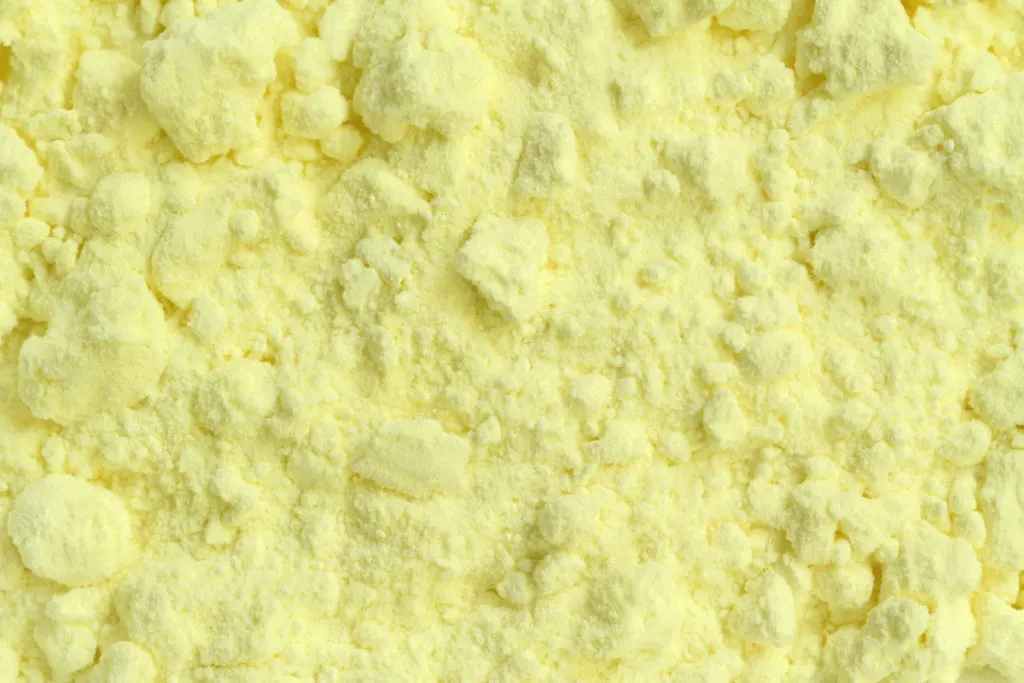
Sulfur fungicides are often sold as fine dust that can be sprinkled over plant foliage or made into a foliar spray. Use it to prevent powdery mildew from settling in on your plants and to control early infections.
Purchase sulfur fungicide here.
9. Use Neem Oil
Neem oil has been used for hundreds of years as an organic pesticide. It’s derived from the seeds of the neem tree (Azadirachta indica) and contains substances that kill and repel all sorts of insects – from aphids and leaf miners to thrips and whiteflies.
Although most use neem oil to control pest insects, it’s also effective for keeping powdery mildew at bay. Spritzing plants in a dilute mixture of neem oil will prevent fungal spores from attaching to the leaf surface and reproducing.
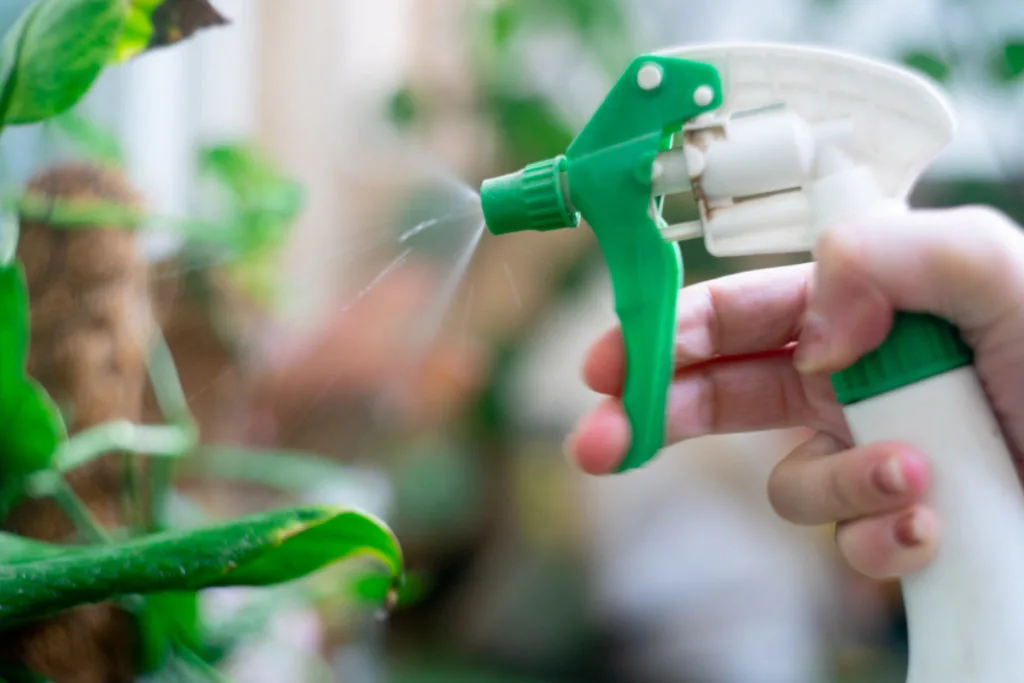
It won’t cure plants of an advanced infection but it will certainly help slow and stop the spread.
Neem oil is generally safe to use on most fruit, vegetable, and ornamental plants. That said, it can burn plant foliage if the mixture is improperly diluted, used excessively, or when applied under direct sunlight.
Because plants need to be thoroughly coated in neem oil to work its anti-fungal magic, it’s always smart to test neem oil on a small area first. Wait a day or two to see if there is a reaction before soaking the entire plant.
Purchase neem oil here.
10. Apply Copper
Another naturally antifungal chemical element is copper. This pinkish-orange metal is biostatic, meaning that bacteria and other microorganisms can’t grow on it.
Copper fungicides are available in liquid or powdered forms. These work by preventing fungal spores from germinating and reproducing, but won’t kill the infection outright.
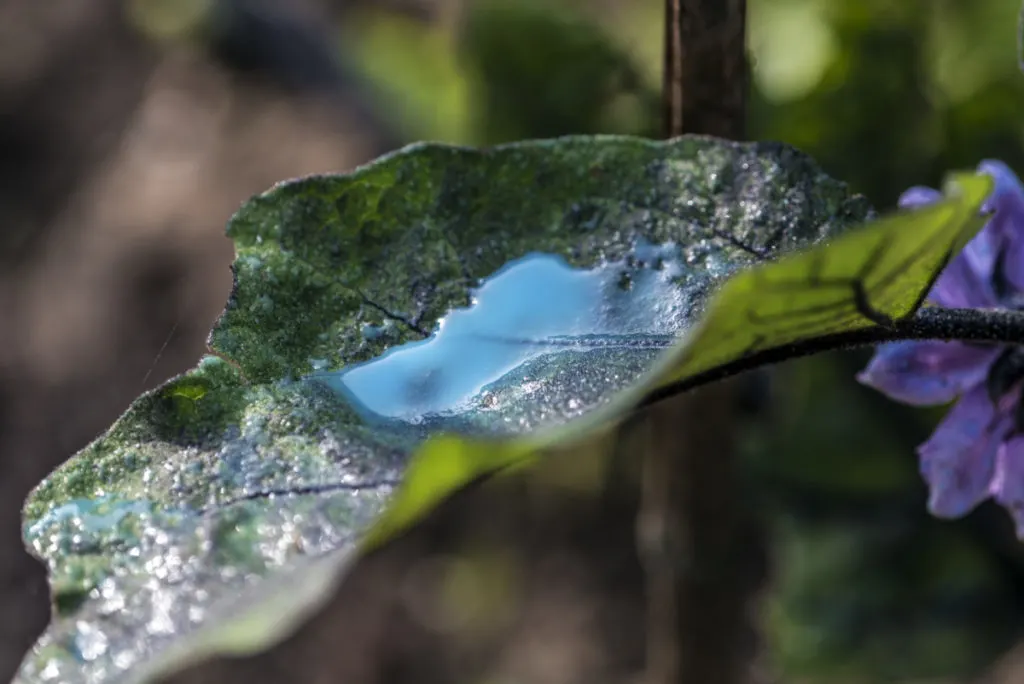
Although copper fungicides are not toxic to birds and bees, these treatments are very toxic to fish and other aquatic organisms so avoid applying them near bodies of water or where runoff may be a problem.
Copper can be a very effective agent against powdery mildew and other fungal diseases as a preventative, but it is powerful stuff.
Using it excessively on your crops will cause it to persist in your garden soil for years, harming future generations of crops. Always follow the manufacturer’s instructions for mixing and applying copper to plants.
Purchase copper fungicide here.

Get the famous Rural Sprout newsletter delivered to your inbox.
Including Sunday musings from our editor, Tracey, as well as “What’s Up Wednesday” our roundup of what’s in season and new article updates and alerts.

